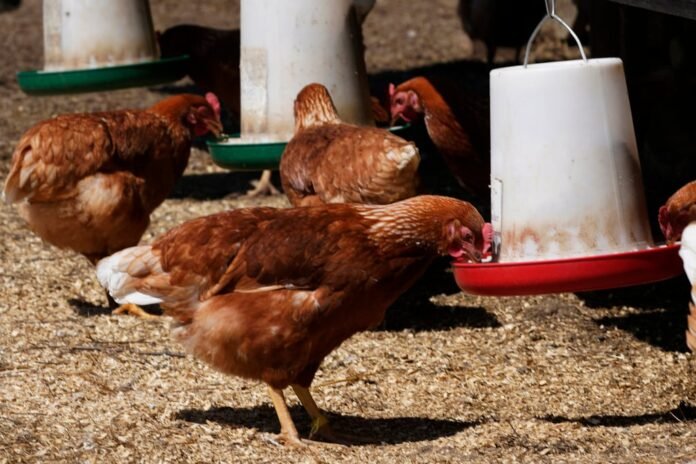The H5N1 strain of avian influenza poses a serious and growing threat of triggering a global pandemic, warns a new study by the Global Virus Network (GVN), which calls for urgent international action to bolster preparedness efforts.
Published April 28 in The Lancet Regional Health — Americas, the study outlines the increasing risk that the highly pathogenic virus, which primarily affects birds, could mutate further and spread efficiently among humans.
“Understanding the current landscape of H5N1 infections is critical for effective prevention and response,” said Dr. Sten H. Vermund, GVN’s chief medical officer. “The virus’s ability to infect both animals and humans, combined with recent genetic changes, underscores the importance of proactive surveillance and rapid response measures.”
Rising Human Risk
The GVN’s warning comes amid a record-breaking outbreak of H5N1 that has devastated bird populations and crossed into both livestock and human populations. Since 2022, nearly 170 million egg-laying hens, turkeys, and other birds have died in the United States due to the virus.
Alarmingly, around 1,000 U.S. dairy herds have also been affected, and 70 people have tested positive for the virus — with one reported fatality. Experts fear that the virus’s expanding host range and continued circulation increase the likelihood of human-to-human transmission.
READ MORE: Disrupted Body Clocks Sharply Increase Risk of Early Death, Global Study Finds
In Canada, the Canadian Food Inspection Agency (CFIA) reports 14 active outbreaks in poultry. While no cattle infections have been confirmed, Canada has recorded one human case—a teenage girl in British Columbia hospitalized late last year with confirmed H5N1.
Calls for Proactive Preparedness
To counter the rising threat, the GVN study advocates a multi-layered approach to pandemic preparedness, urging governments, researchers, and the agricultural sector to prioritize the following:
- Enhanced global surveillance of animal and human cases
- Faster genomic data sharing between institutions and countries
- Improved farm biosecurity measures to prevent cross-species transmission
- Rapid diagnostic test development and distribution plans
- Expanded vaccine research and accelerated deployment strategies
- Strengthened public health infrastructure to detect and contain outbreaks
- Investment in phenotype prediction based on viral genetic data
- Preparedness for rapid clinical studies when new human cases emerge
- Deepened international cooperation to harmonize outbreak responses
The GVN emphasized that lessons from COVID-19 should not be forgotten, warning that delays in acting on early signals could once again cost millions of lives.
Urgency for Global Response
While there is currently no sustained human-to-human transmission, experts caution that H5N1 has shown the potential for further adaptation. Its recent genetic shifts and ability to infect mammals—including cattle and humans—have sparked concerns among public health officials and virologists alike.
“We are at a critical inflection point,” said Dr. Vermund. “Preparedness is not just a scientific necessity—it’s a moral one.”
With avian flu cases now spanning North America, Europe, Asia, and parts of Africa, scientists are urging governments to treat H5N1 with the same seriousness as other pandemic threats. Timely investment in vaccines, therapeutics, and rapid-response infrastructure could help prevent a public health crisis with global consequences.
As of now, both Canada and the United States are expanding monitoring programs and coordinating with international bodies such as the World Health Organization (WHO) and the World Organisation for Animal Health (WOAH) to better track viral spread and potential mutations.
A Global Threat That Demands Global Action
The GVN study underscores that pandemic prevention is no longer theoretical. With zoonotic diseases like H5N1 threatening to jump species barriers with increasing frequency, cross-sector vigilance, scientific collaboration, and political will are vital.
